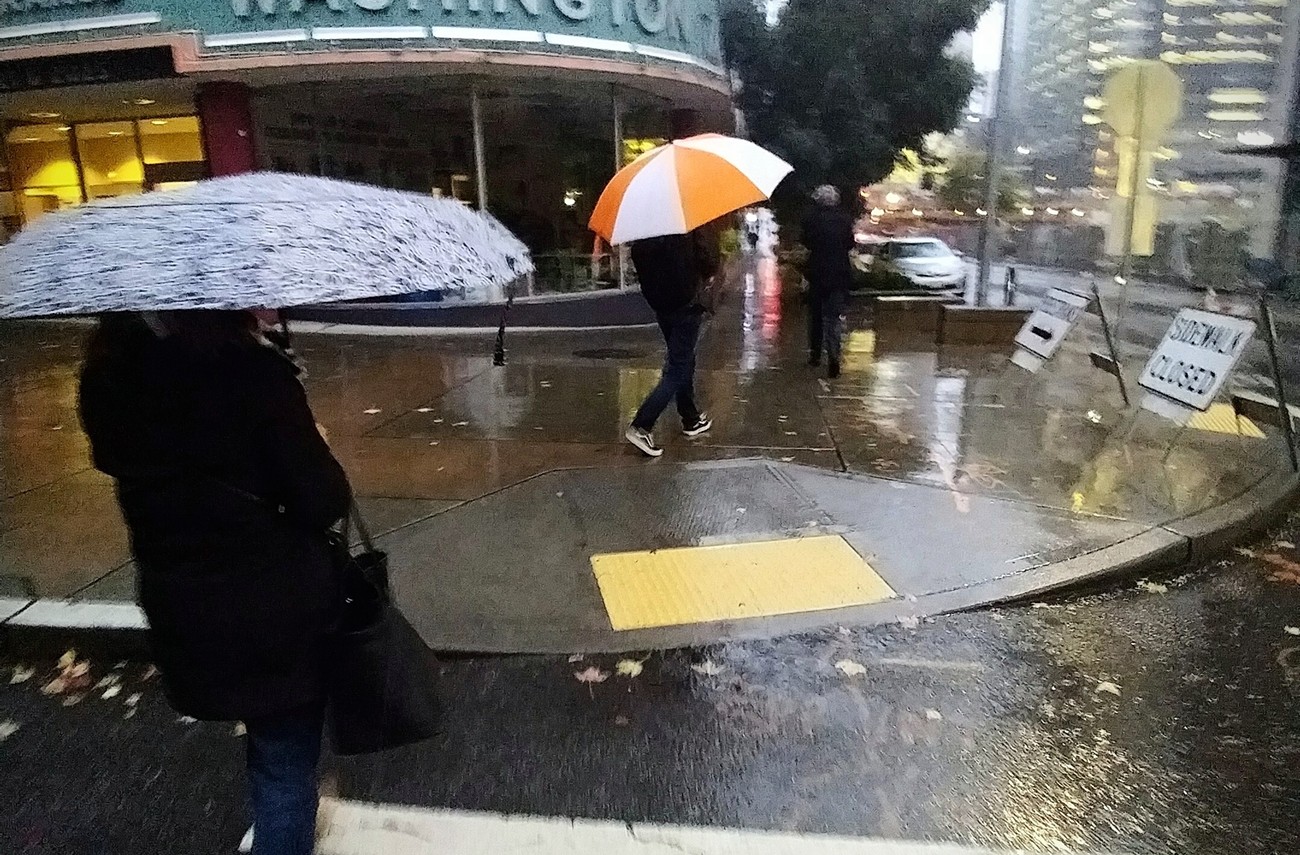At around 4 pm on Tuesday, the real rain really fell on Capitol Hill. This was the kind of rain that the fictional taxi driver Travis Bickle longed for. A downpour that could "wash all the scum off the streets" of NYC. Did this kind of rain have something to do with the Seattle Is Dying crowd? Let's dream a little.
Imagine them praying and praying to the gods of middle-class aspirations to wash the homeless and tweakers—in short, the scum—from our streets. Did these gods finally cave and give them what they wanted? Bickle's real rain? It's not impossible. If you pray hard enough, things just might happen. Just as if you bang into a wall long enough times, you might just pass through it like a ghost. Given enough time (billions of years), anything can happen.
But even I, a long resident of this city, was shaken out of my “dogmatic slumber” when the rain hit at 4 pm on the corner of John Street and Broadway. It was loud, heavy, and hit the streets with a force that might have mangled a cheap umbrella. I have never owned one of those things. Crappy (like the ones sold at Walgreens) or costly, small or large (like Amazon's orange and white ones), they were a mark of being an outsider. You were not true to the culture of the Pacific Northwest if you held one over your head. Here, the rain was mild-mannered. It modestly moved between misty and drizzly. This was not rain that got in your way. Nor did it make your clothes that wet. But yesterday, on that October afternoon, I found myself looking for shelter. The rain went right through your clothes. It soaked into your skin. I could not walk to my destination. What was this about? Climate change?
It is absolutely dumping out there. It seems like there has been a major shift in the last few years away from the misty rain we used to get towards global warming fueled downpours? https://t.co/ZdEg3xAXsM pic.twitter.com/1CClqBrwkp
— Gordon Padelford (@GordonOfSeattle) October 11, 2023
Yes, Seattle's yearly rain total "is 8th driest through October 9th since 1945 & the driest it has been since 1994." But, as Gordon Padelford pointed out, it seems that hardcore downpours, the kind you experience in tropical regions and East Coast cities like NYC, are becoming more frequent. And this might be "more than a feeling, more than a feeling!" At the beginning of this year, Christine Clarridge at Axios Seattle asked the same question: "Climate change could turn Seattle into an umbrella city." And, with the data from "the meteorologist in charge of the Seattle forecast station Logan Johnson" reported that:
Based on 80 years of weather records taken at Seattle-Tacoma International Airport, Seattle is seeing more days with over 1 inch of rain...
Among days with the highest rainfall total, five of them have occurred since 2000...
The wettest day was on Oct. 20, 2003, when the city got 5.02 inches of rain; the 5th wettest was recorded on Dec. 20, 2022 with 3.25 inches.
The wettest fall on record was recorded in 2021 with 10 inches falling in November alone.
But what does global warming, which is as real as rain, but not as real as Seattle Is Dying's Seattle, have to do with all of this? The transition from one equilibrium (the Holocene) to the next (the Capitalocene) is not, to put it in an old-fashioned way, a walk through the park. It's necessarily a very rough and violent business. Extreme events will only decrease when a new and probably inhospitable (for humans) equilibrium is established. (The Holocene has only been around for 12,000 years; the Capitalocene might be here, like the Pleistocene, for millions.) We, in short, are in the middle of a global storm. In this period of extremes, those devoted to the moderate culture of the Pacific Northwest will likely be forced to drop their established identity and buy air conditioners and umbrellas.














